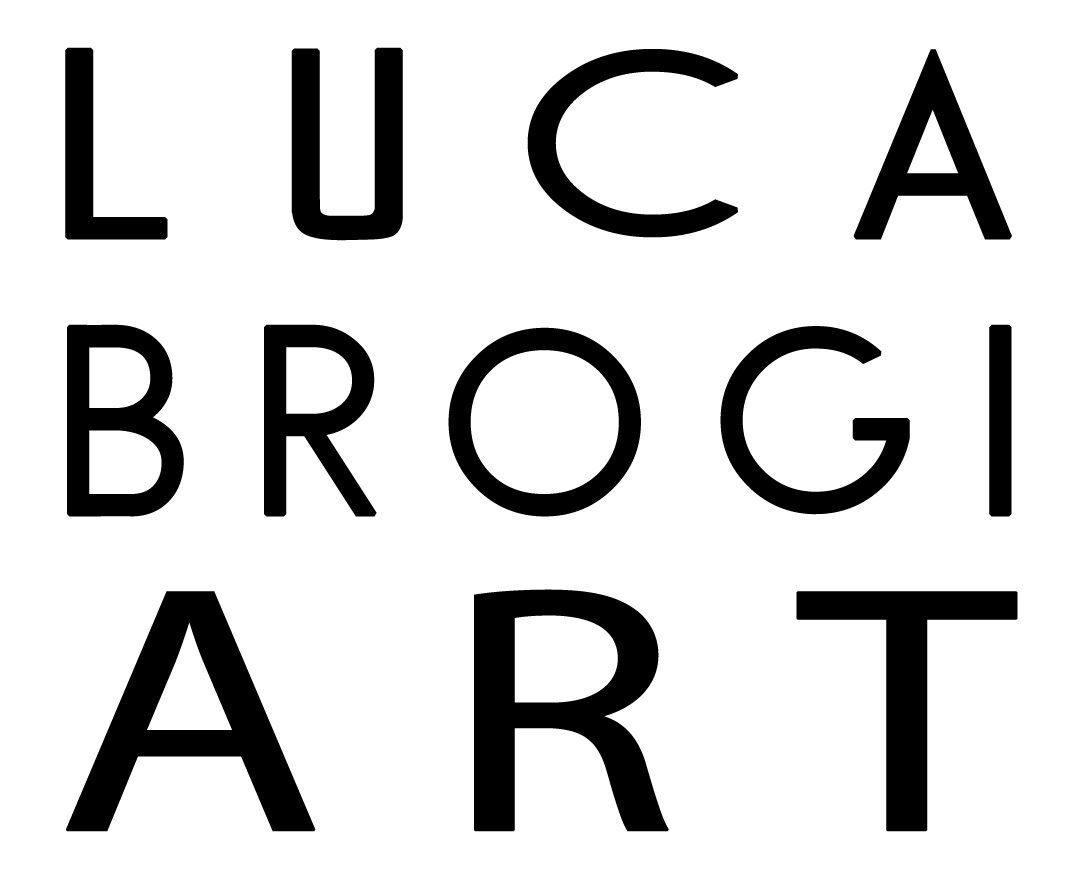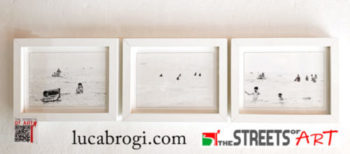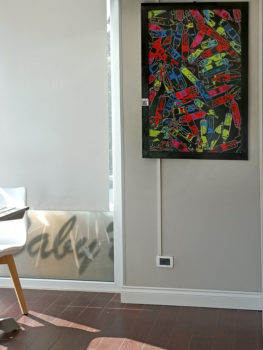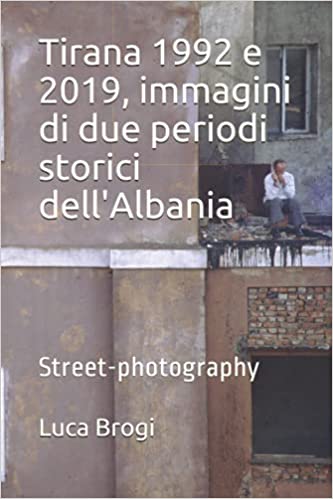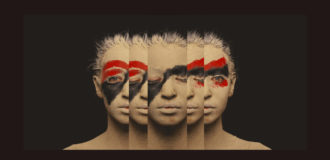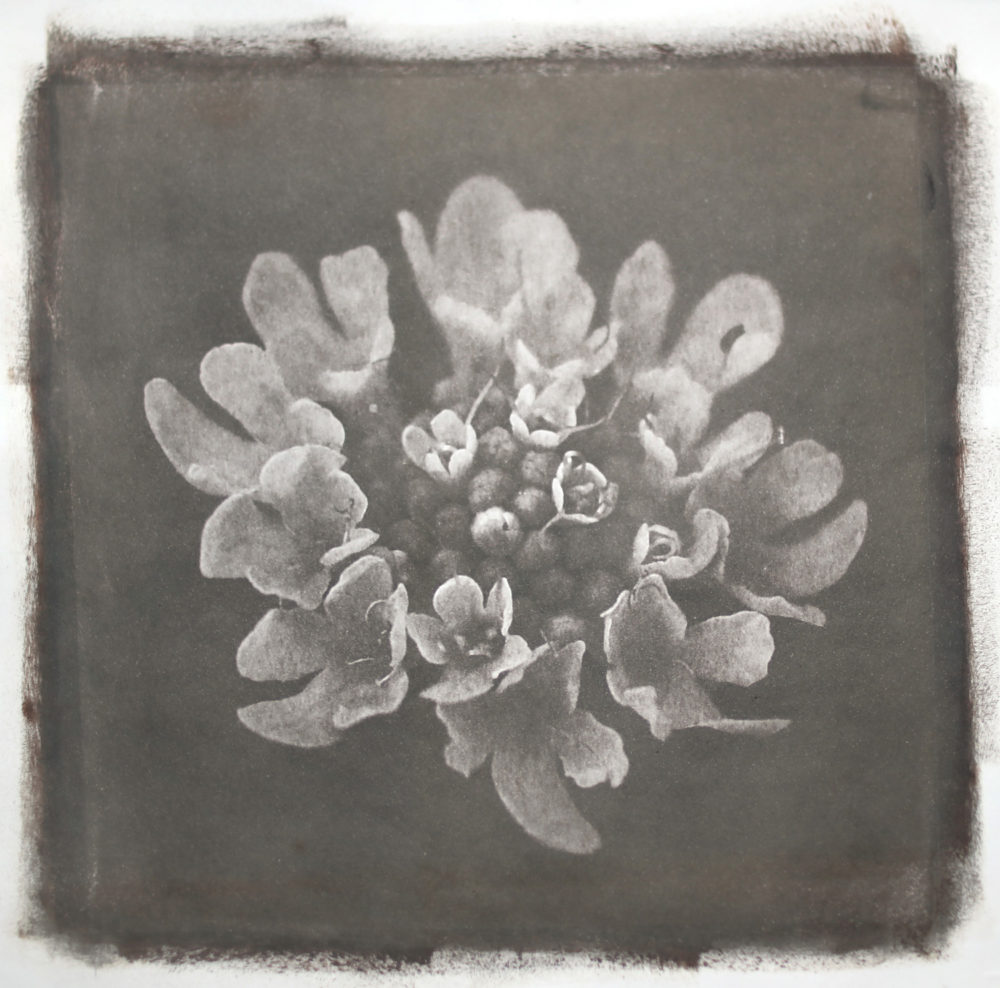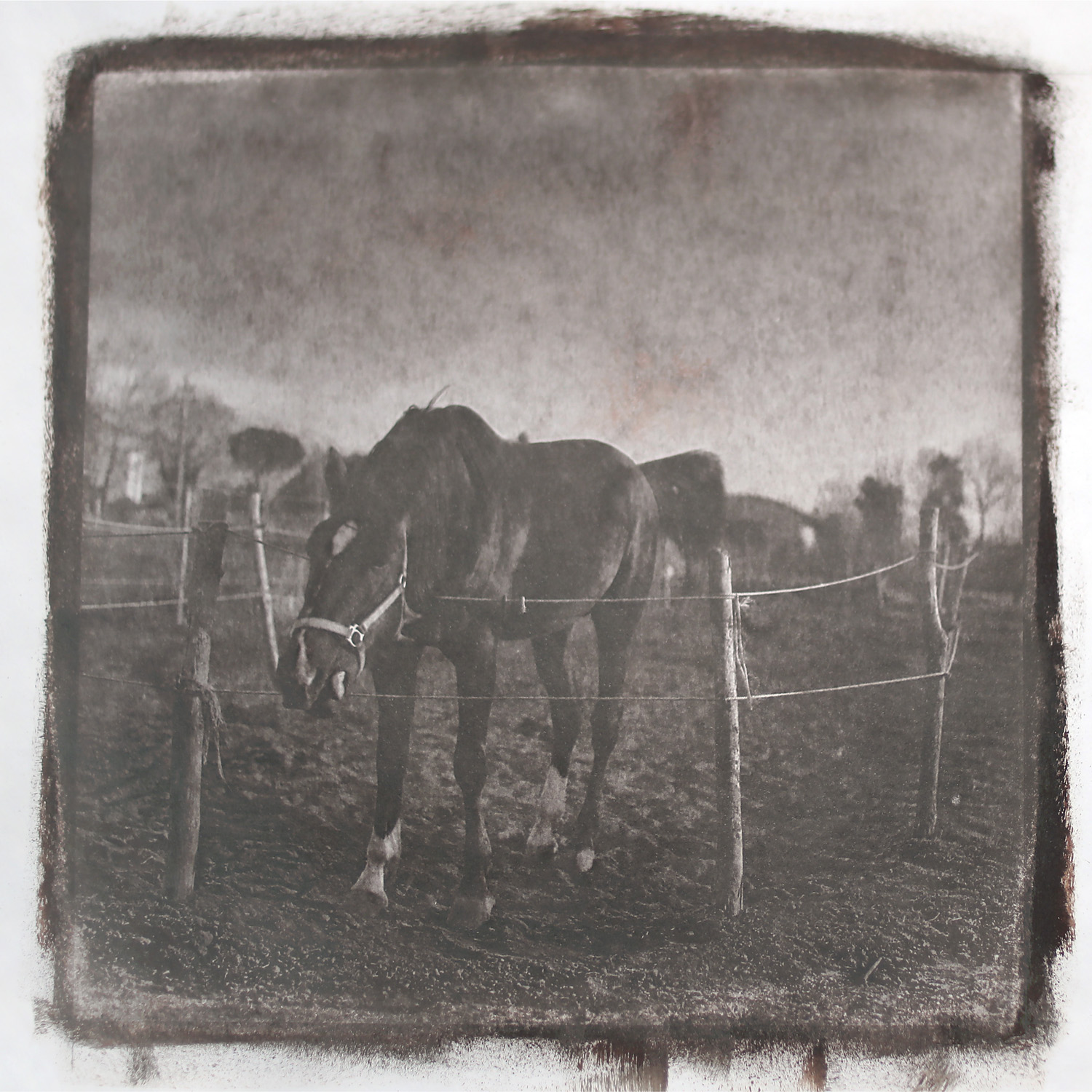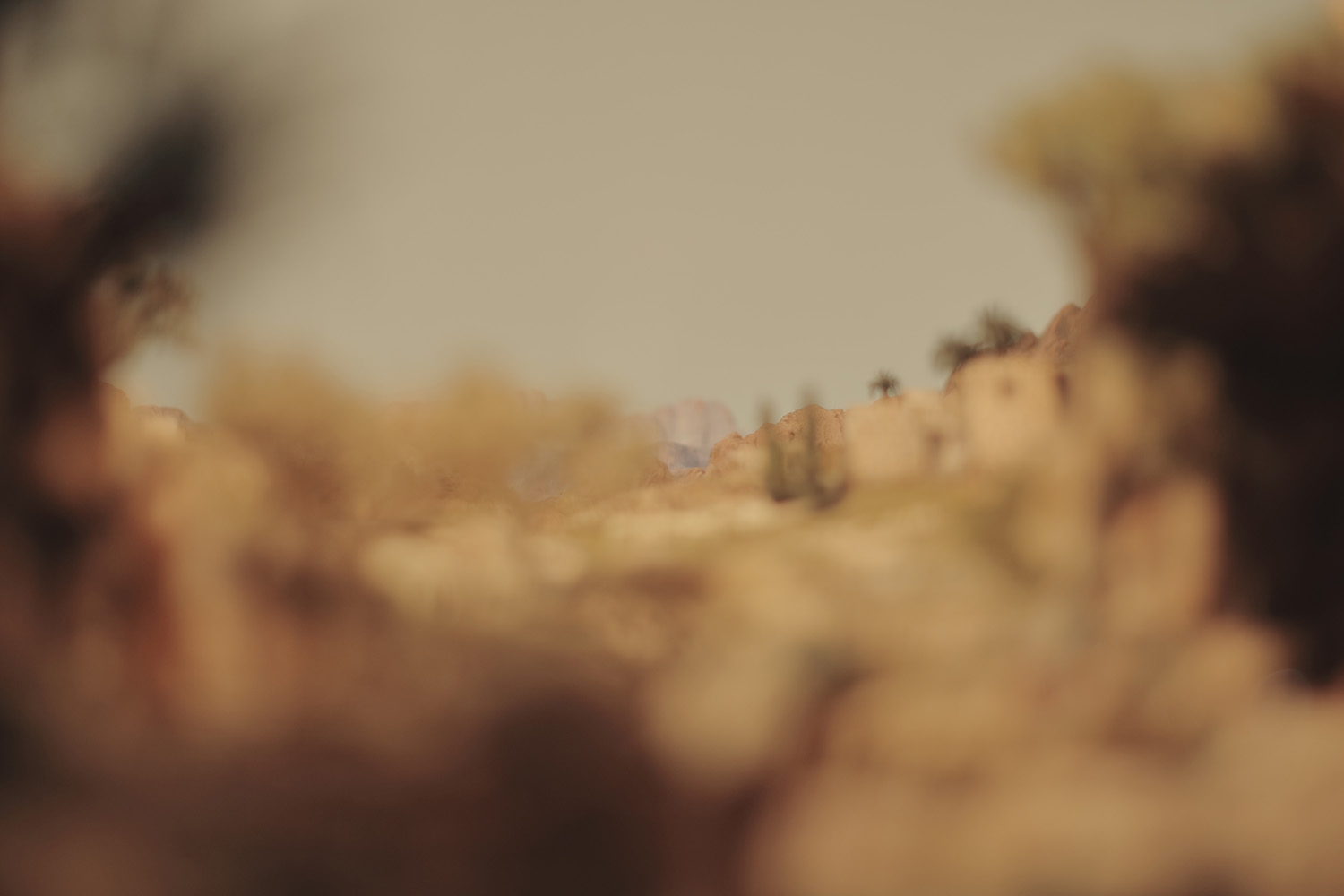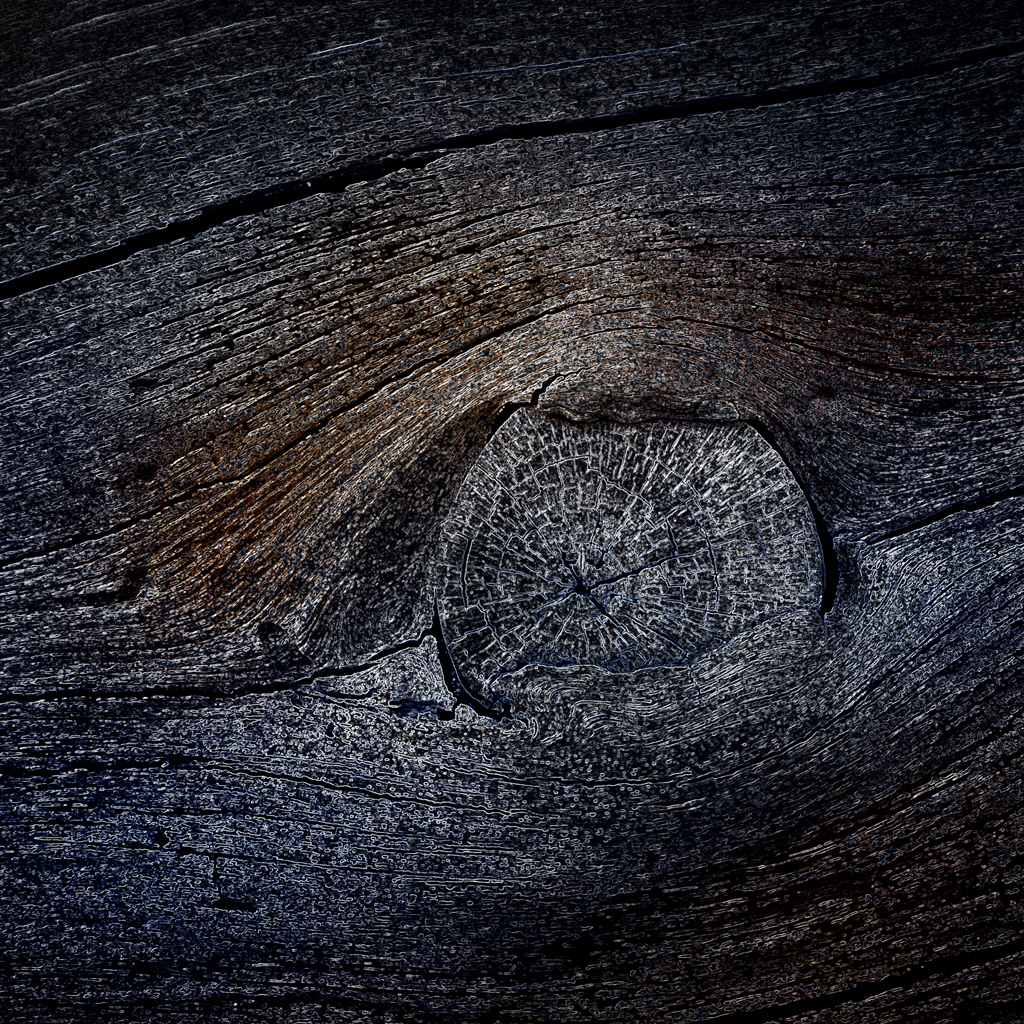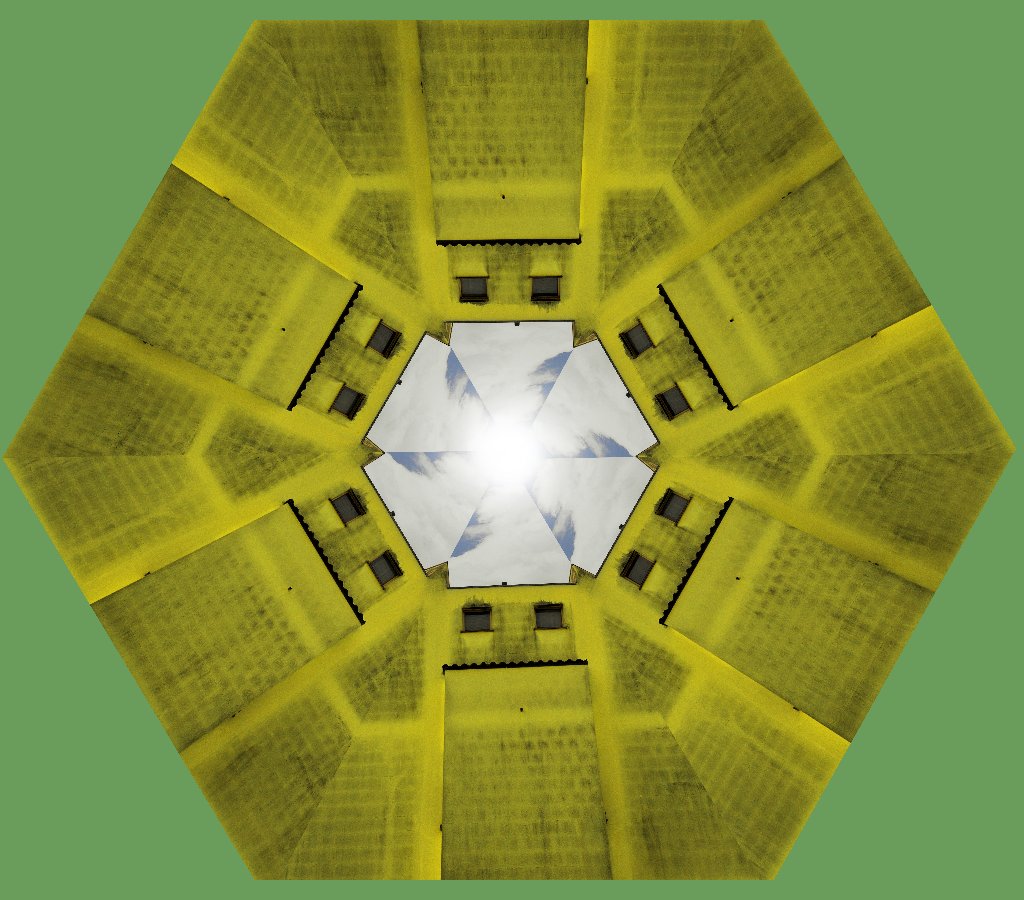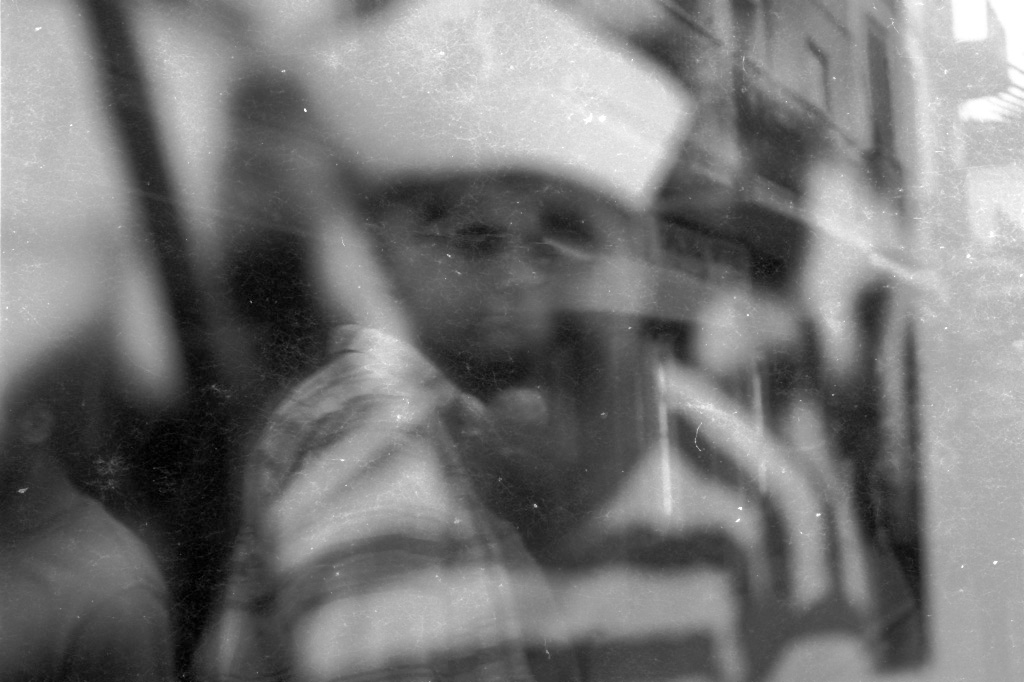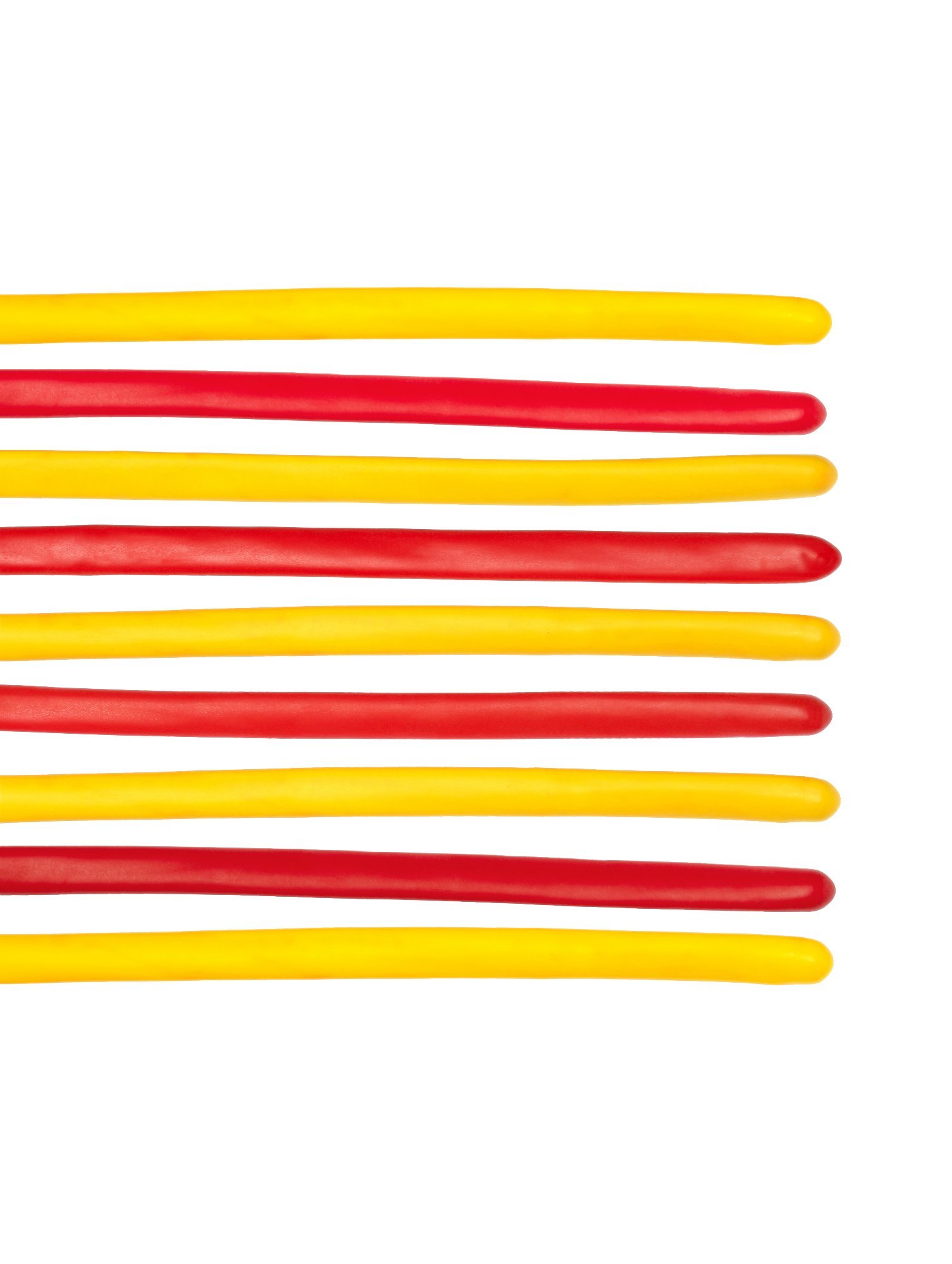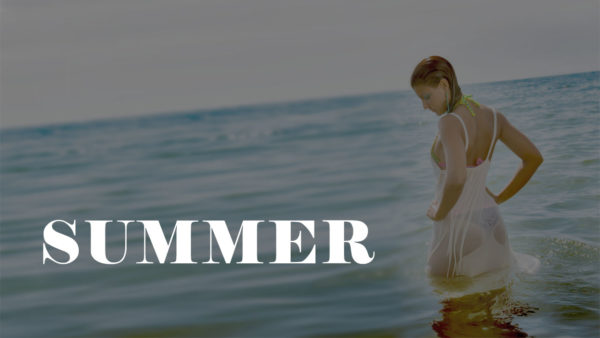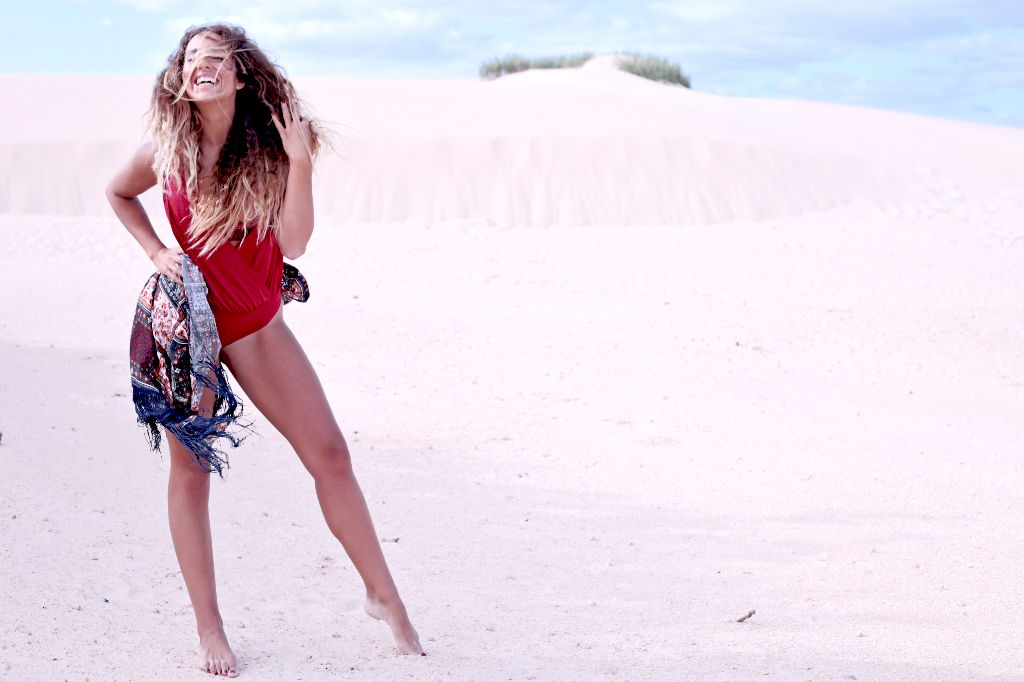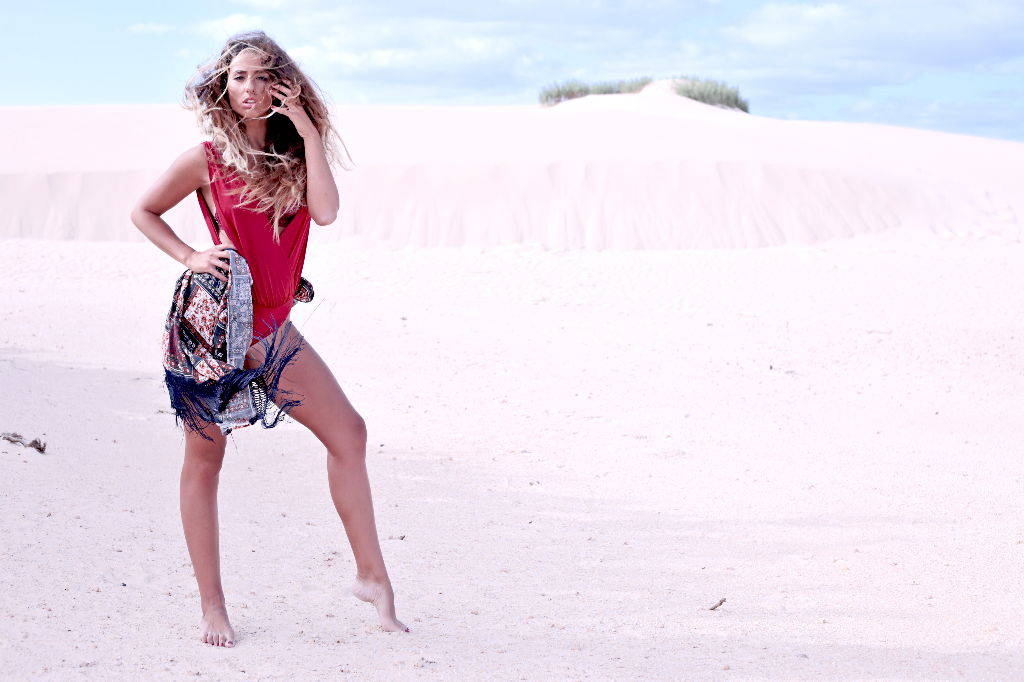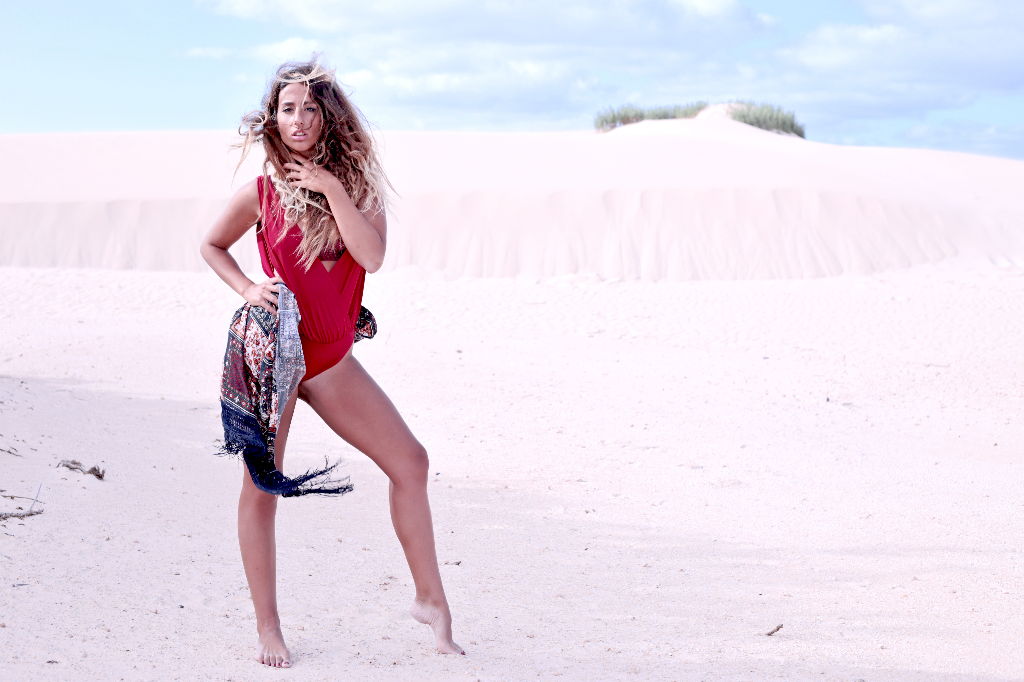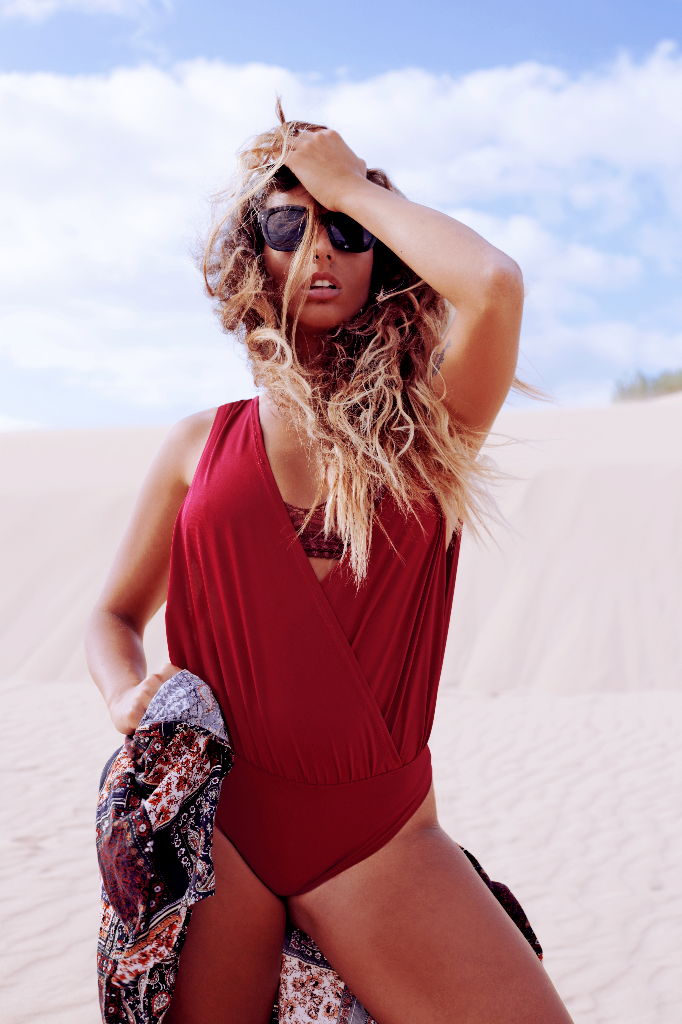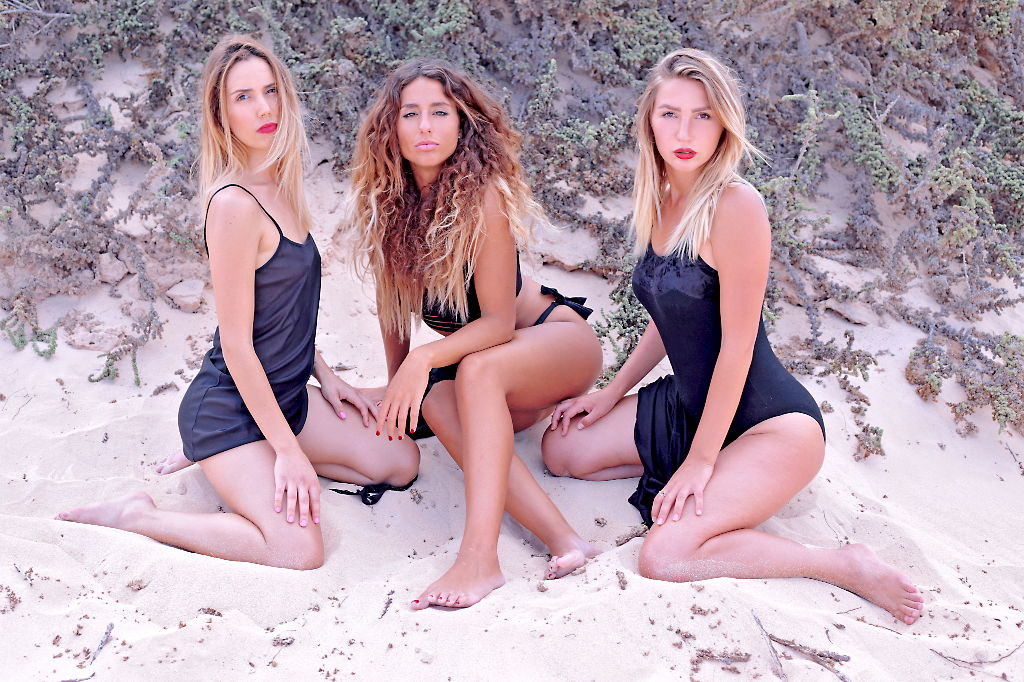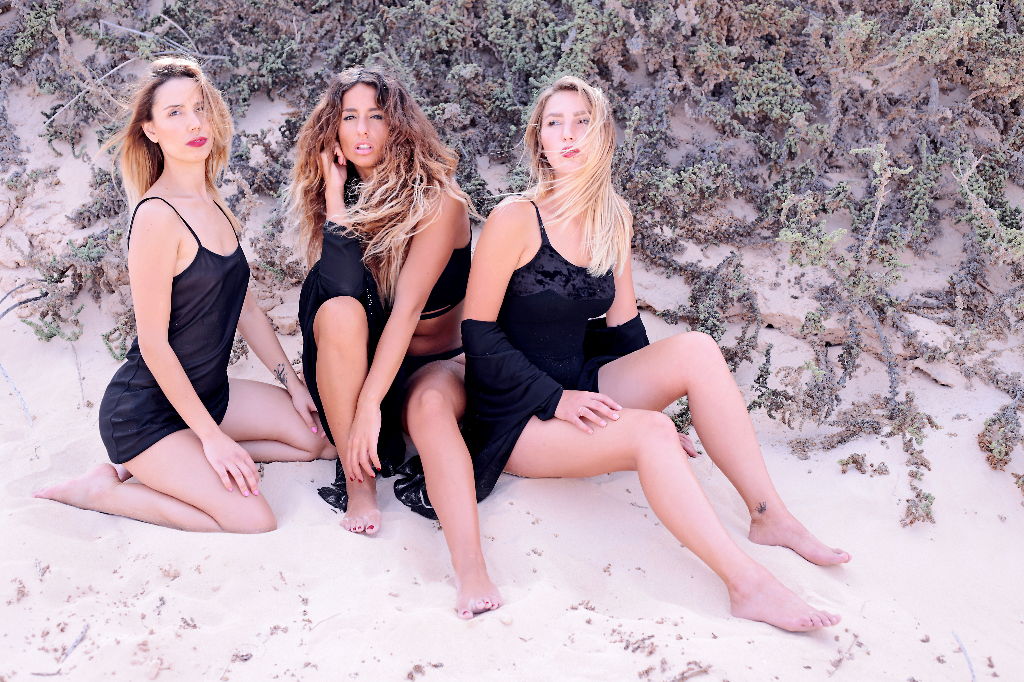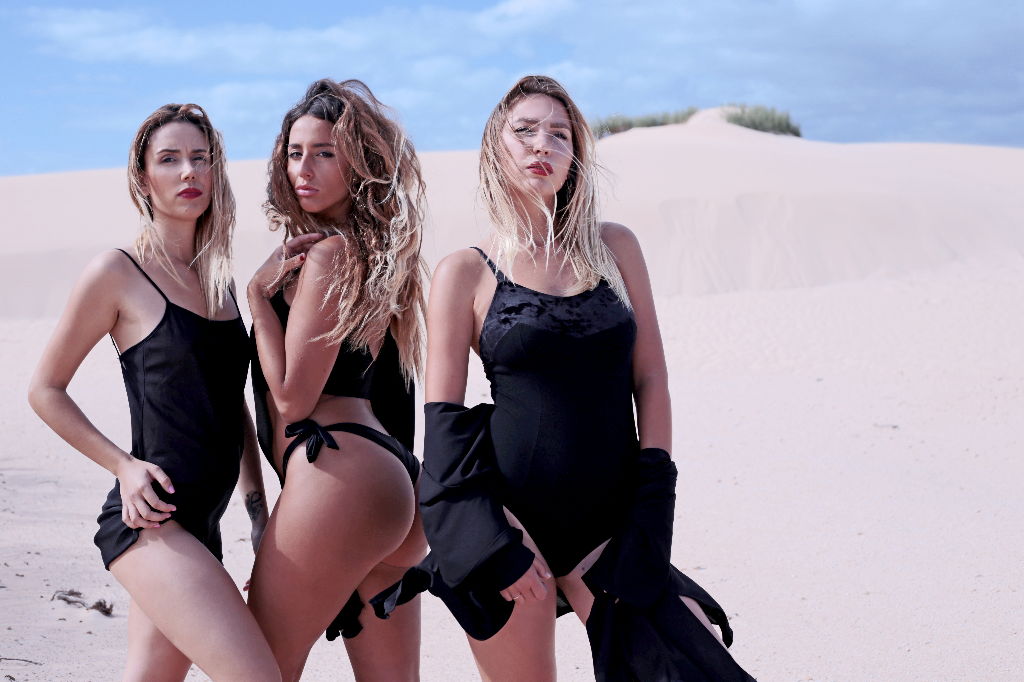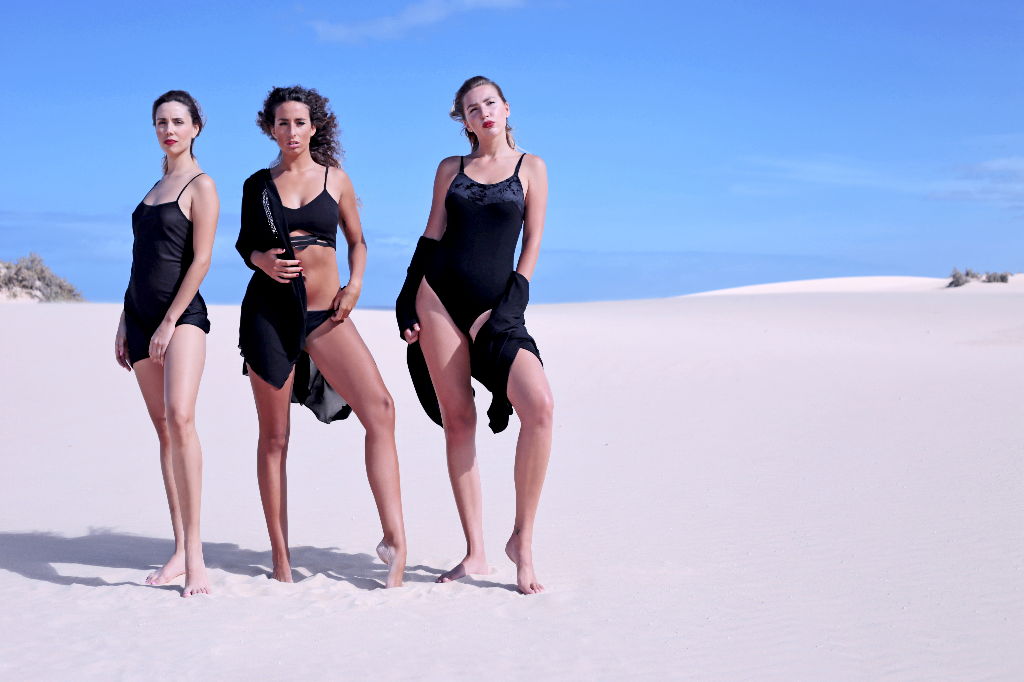Art at Baby Bar in Viareggio
Tirana – Albania 1992-2019 The Book
Living material
Blue impressions
Body – Van Dyke Print- Luca Brogi Photography
Flower- Van Dyke Print- Luca Brogi Photography
Horse – Van Dyke Print- Luca Brogi Photography
Imaginary Landscapes
The need for a new conscience
Marine wood – Luca Brogi Photography
Project on the form
Impression – Experimental project
1990 “Pellerossa” Bologna art academy
Chromotherapy
Beachwear shooting
SUMMER (Official video) – Model on the beach – Luca Brogi Production
SUMMER is a video of little more than a minute, maked in Marina di Vecchiano in Tuscany. The beautiful day helped the shooting, the non-professional model, very naturally managed to interpret well the idea of the project. I have to thank Stefania Sberze for the artistic direction, makeup and hair-style, but also for the choice of clothing and location.
It all started when I wanted to try the Canon 6D in the video function, I did not think it had such a good quality, the camera is very versatile and easy to use, it was easy to shoot the scenes. For greater stability and ease of use, I had to get some accessories to hold the camera with one hand and move it in different directions, views, and on an external display we can control remote shooting. With the editing of the scenes I wanted to emphasize the naturalness and spontaneity of the model’s movements, mixing various summer images with the image of the subject. In the project the chosen piece of soundEgo was fundamental, because it immediately gave me the idea of a positive atmosphere. Thanks to Stefania Sberze, Sara, and sounEgo for the success of this project.
Luca Brogi
Instagram Image by @lucabrogi_lasuertesiempre
Facebook Image by @Luca Brogi Fotografo
Publication on Steemit
My art gallery on Saatchi
My art gallery on Fineartamerica
Shooting at Las Dunas Fuerteventura for GQItalia
Las Dunas
Shooting at Las Dunas – Fuerteventura for GQItalia
Instagram Image by @lucabrogi_lasuertesiempre
Facebook Image by @Luca Brogi Fotografo
Publication on Steemit
My art gallery on Saatchi
My art gallery on Fineartamerica
Fuerteventura island
Fuerteventura
Ho deciso di raccontarvi il viaggio che ho fatto a Fuerteventura perché voglio condividere con voi questa esperienza.
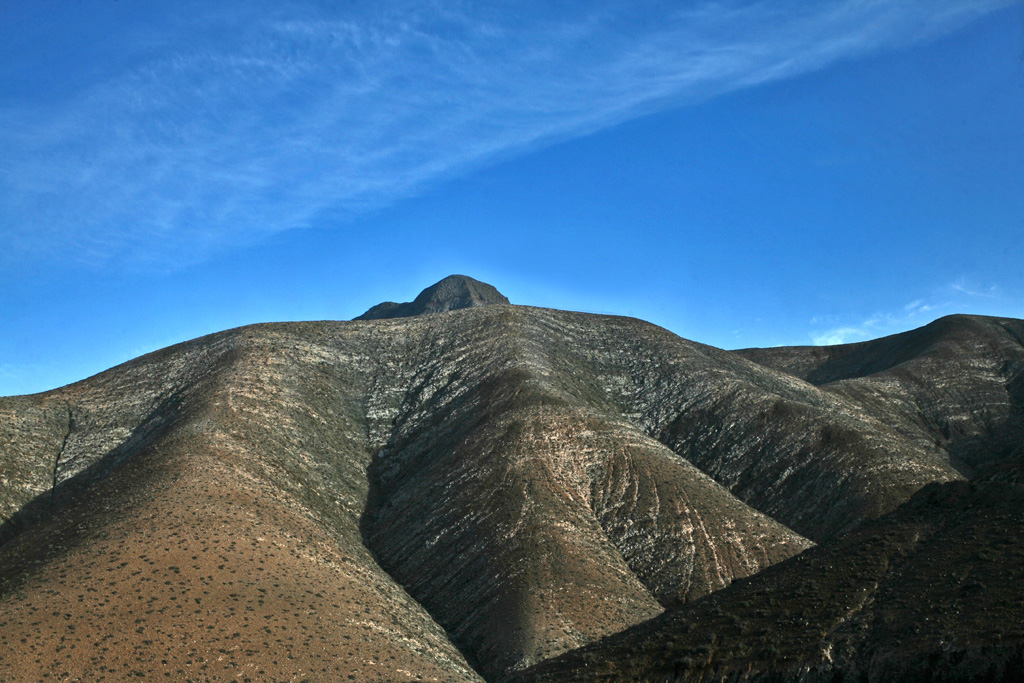
Fuerteventura, è un’isola che mi affascina, perché è un posto avvolto da un’aria di mistero e da improvvisi trasporti temporali. Fuerteventura fa parte della Spagna, si trova nella linea subtropicale al largo del marocco, e fa parte di un gruppo di isole dal nome “Canarie” ( 28°20′ N e 14°00′ O ). La superficie dell’isola è di circa 1.600 km², la popolazione nel 2017 è circa 110.000 abitanti, ma è in continuo aumento. È poco popolata, le principali attività praticate sono: l’agricoltura (frutta, ortaggi), la pesca e il turismo.
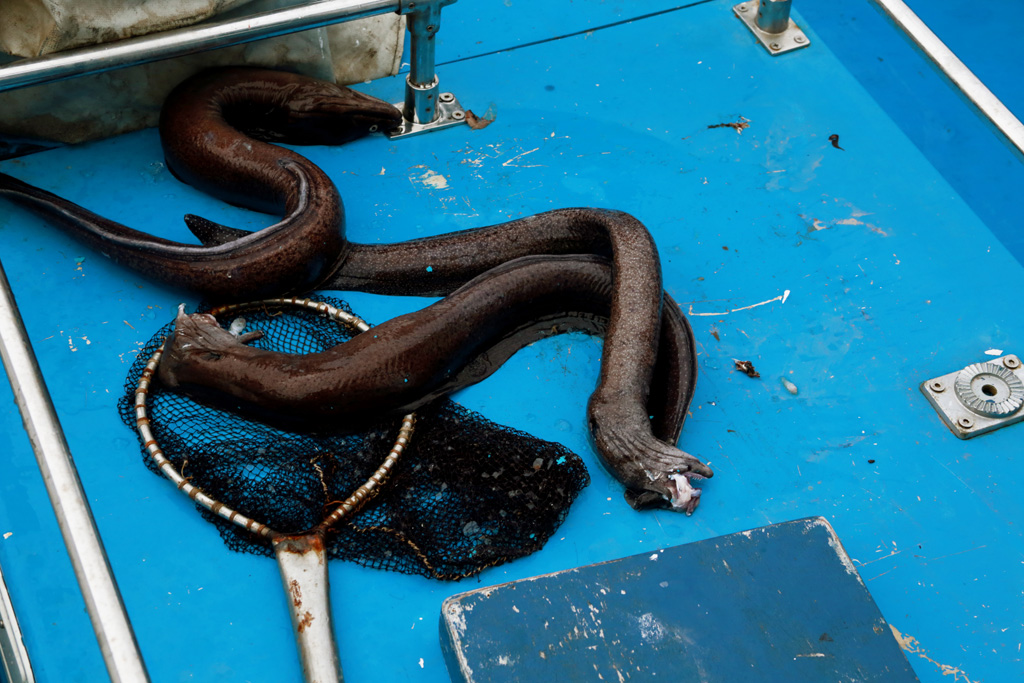
E’ un’isola speciale dal clima mite e soleggiata per la maggior parte dell’anno, ci sono più di 152 spiagge lungo la costa, con chilometri di sabbia fine e bianca e di ghiaino vulcanico.
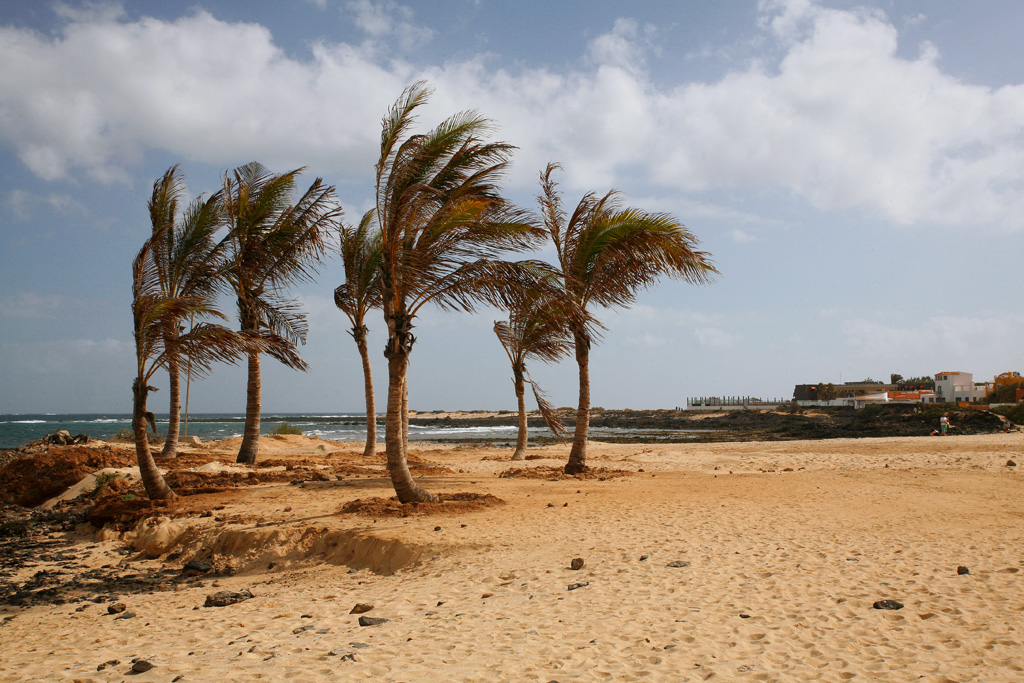
Le spiagge più popolari sono: El Cotillo, le dune di Corralejo, Sotavento, Cofete, Barlovento, Garcey, Morro Jable, Jandia, Las Playitas e Pozo Negro. Gli alisei estivi e le onde di marea invernali dell’Atlantico che sono presenti per tutto l’anno, fanno dell’isola, un paradiso dei surfisti. Subacquei, velisti e pescatori d’altura sono attratti dalle acque limpide, dove è facile imbattersi in delfini, balene, tartarughe e pesci spada. L’isola è ricca di aree protette, che possono essere esplorate in fuoristrada o con moto da cross.
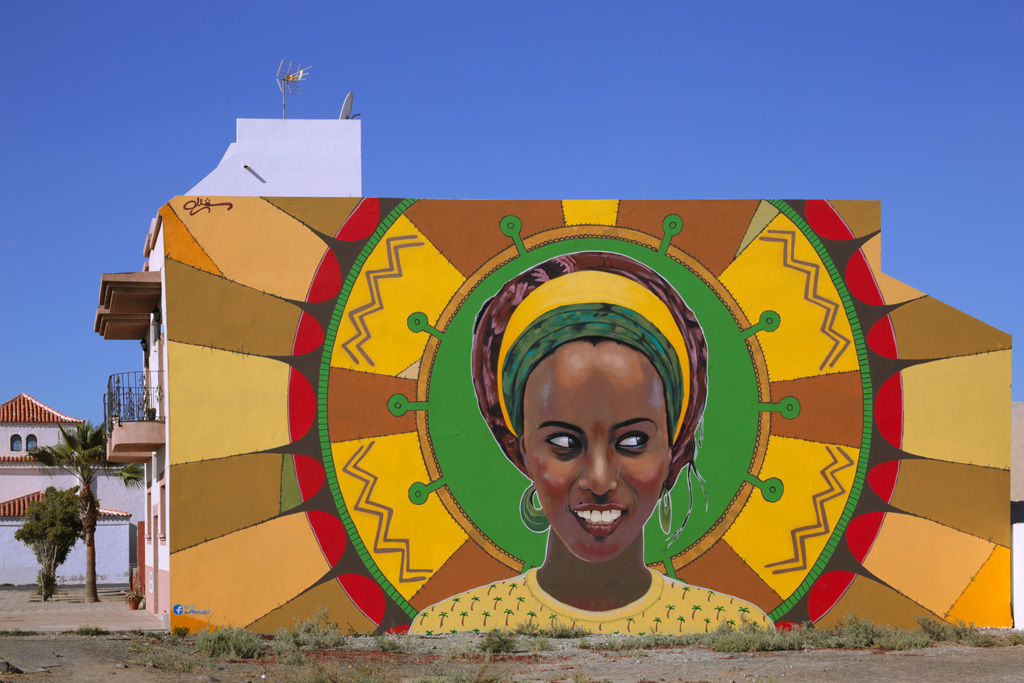
La capitale dell’isola è Puerto del Rosario (Puerto Cabras fino al 1956). A circa 9 Km a sud si trova l’aeroporto, punto di partenza. Qui, io e la mia compagna Stefania, abbiamo preso a noleggio una macchina. In questo periodo l’abbiamo noleggiata presso “Payless”, ma altre volte l’abbiamo noleggiata anche da altre aziende, come “Autos Pluscar”, tutte e due molto convenienti e senza spese aggiuntive a sorpresa. Durante il viaggio per l’alloggio, si viene travolti da emozioni e sensazioni nuove, il paesaggio sembra un libro del tempo e dello spazio.
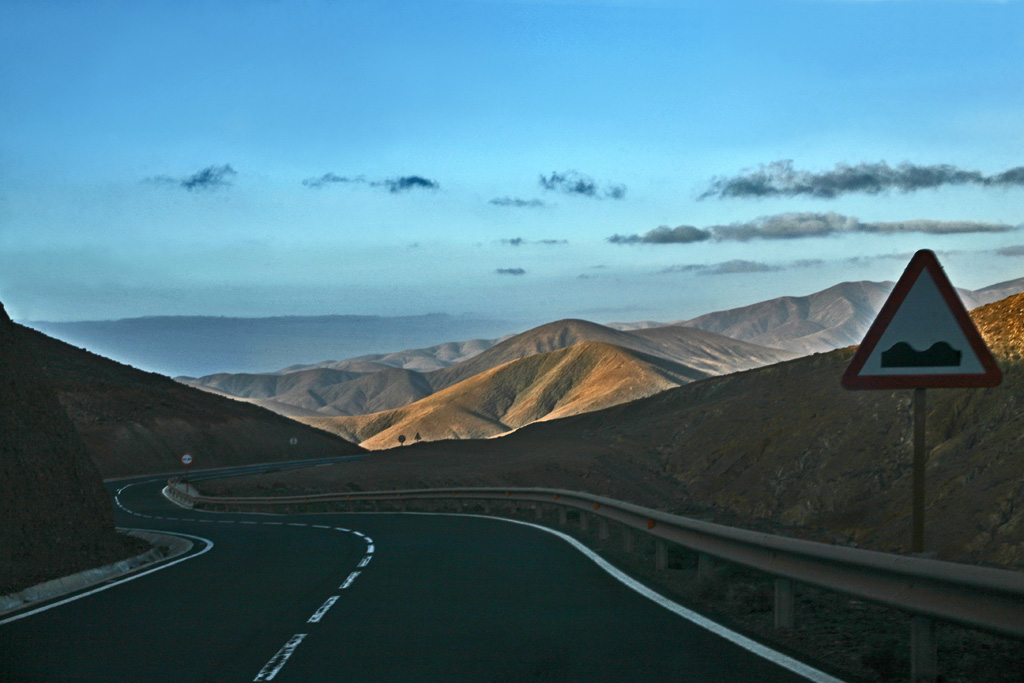
Dall’aeroporto al nord dell’isola si può prendere una strada che passa attraverso il territorio costiero, brullo e arido, terra vulcanica ovunque, rocce che sono state sbalzate dappertutto, fino alla spiaggia, dai vulcani presenti su tutta l’isola, dei quali si vedono le bocche spente ormai da moltissimi anni.
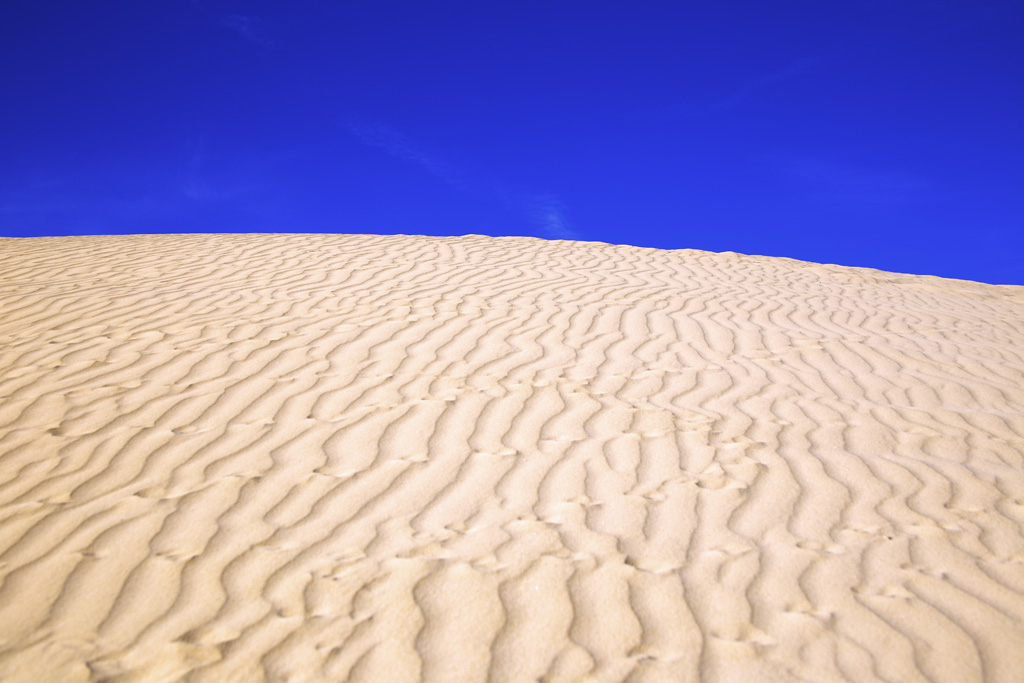
Il panorama cambia continuamente, si formano contrasti di colore, dal blu azzurro cristallino dell’oceano al bianco della schiuma delle onde, il colore chiaro della sabbia ed il nero delle rocce, uno spettacolo della natura. Dopo alcuni chilometri la strada attraversa le Dune di sabbia chiara, alcune di queste sono alte anche 15-20 metri, dalle quali ci si può lanciare in una folle corsa in discesa, attenuata dalla sabbia morbida, un vero divertimento.
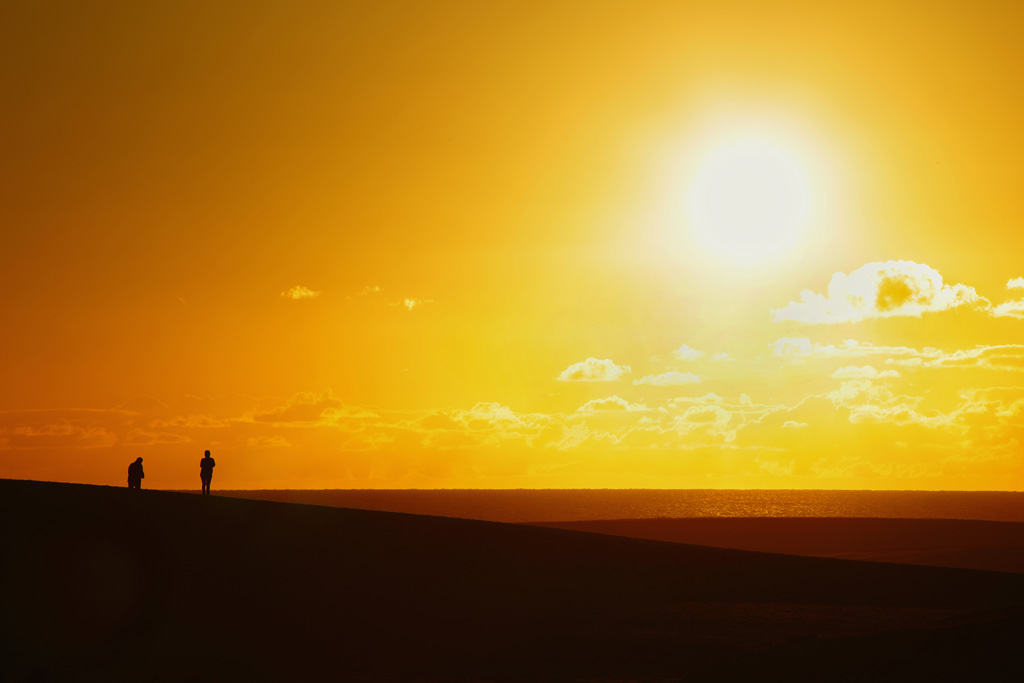
La nostra meta è Corralejo, nella parte Nord dell’isola. Viaggiando con la macchina si possono vedere alcuni paesini sulle alture e sulla costa. Puerto del Rosario è una cittadina animata, ed in continuo rinnovamento, si possono trovare molti murales lungo le strade, che, come un reticolo di una scacchiera, formano il centro della città. Verso il mare si trovano due spiagge. una è vicina al centro e al porto l’altra si trova a sud della città, composta di sabbia nera è la spiaggia per i residenti. Corralejo è una cittadina molto turistica, piena di negozi, bar, ristoranti, pub inglesi e molti servizi e attrazioni.
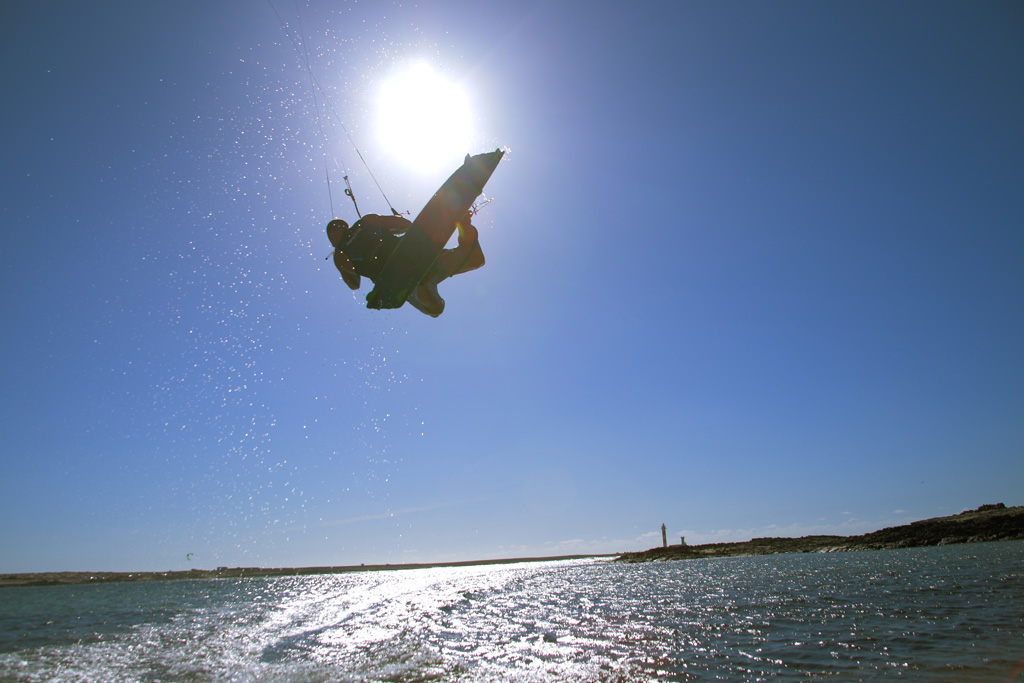
Si possono fare molti sport come: surf, windsurf, kitesurf, skateboard. Ci sono anche palestre all’aperto, percorsi per la bici e per il trekking; insomma, non ci si annoia mai. Molte manifestazioni folcloristiche sono libere e programmate durante tutto l’anno. Qui si svolge anche il carnevale fatto di costumi molto vistosi e curati, balli che vengono effettuati anche lungo la strada o nelle piazze con concorsi di performance con in palio premi. I paesini sul mare sono molto caratteristici, da visitare Majanicho lungo la strada che da Corralejo va verso El cotillo, passando dalla costa lungo una strada sterrata. L’isola è tenuta molto pulita, sia dai locali che dai turisti che la visitano, regola necessaria per mantenere un luogo pulito è avere un forte rispetto per la natura e per il luogo in cui siamo ospiti.
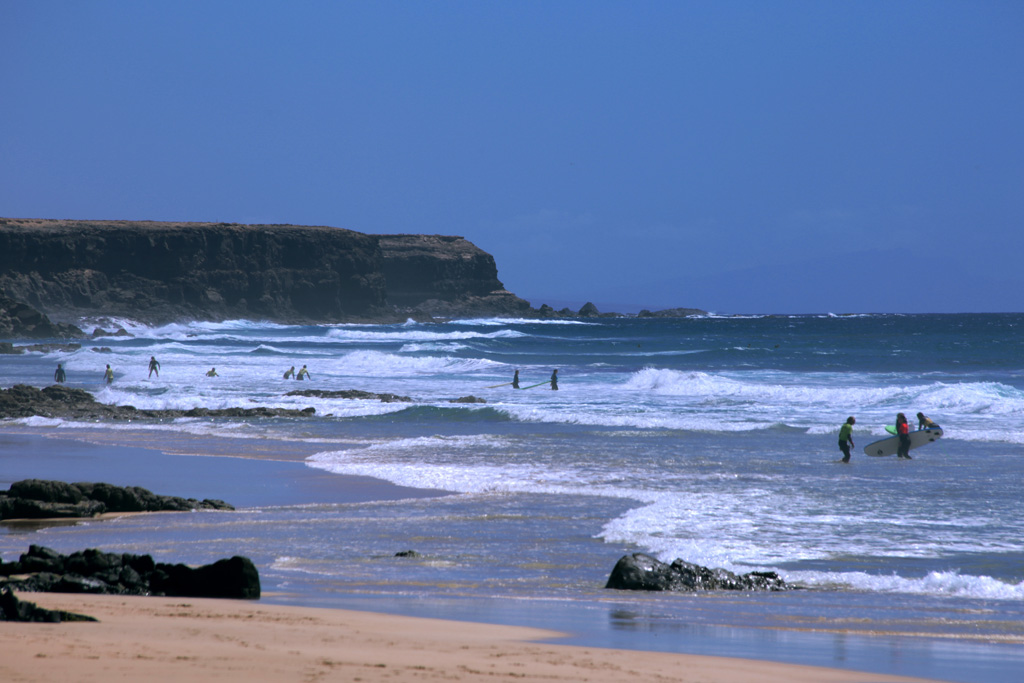
El cotillo è un paese rimasto un po’ isolato, ma proprio per questo è richiesto da persone che amano la natura e la tranquillità, inoltre qui possiamo trovare alcune delle spiagge più belle dell’Isola. Lungo la strada che passa dalla costa, si incontrano parecchi furgoni e camper di surfisti. Lungo questa via si trova Majanicho, un paesino di pescatori sul mare, con poche casine in stile isolano.
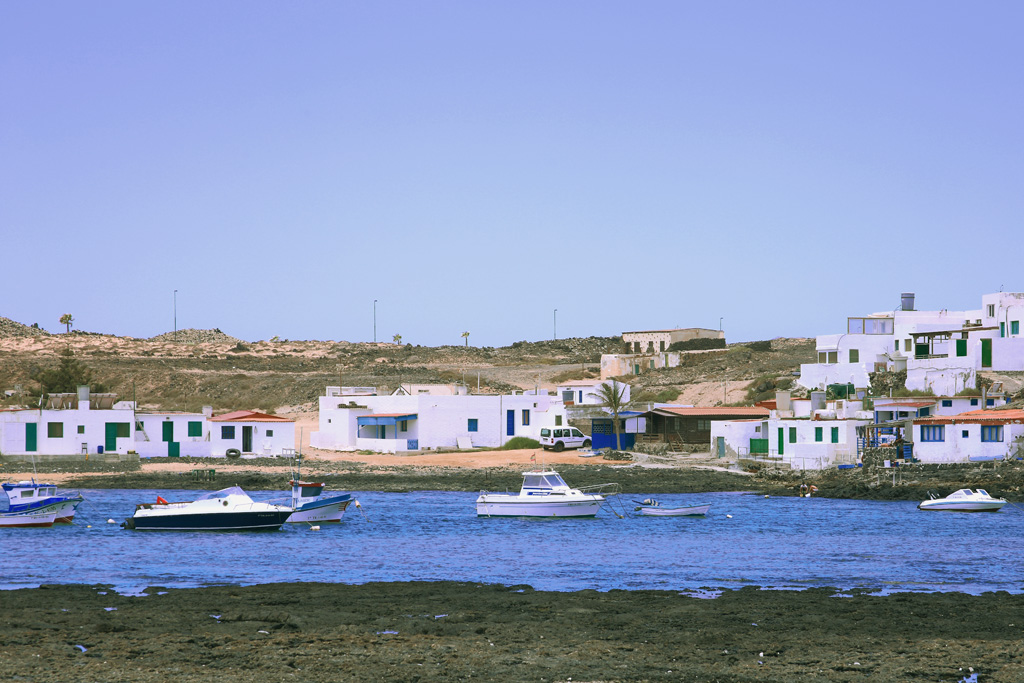
Un’atmosfera leggera e rilassante, ormeggiate di fronte ci sono le barche colorate dei pescatori che ancora oggi usano in regime ecosostenibile. Il viaggio alla scoperta dell’isola ha preso poi un’altra direzione sud verso l’interno alla ricerca di Antiche Tradizioni e luoghi incontaminati.
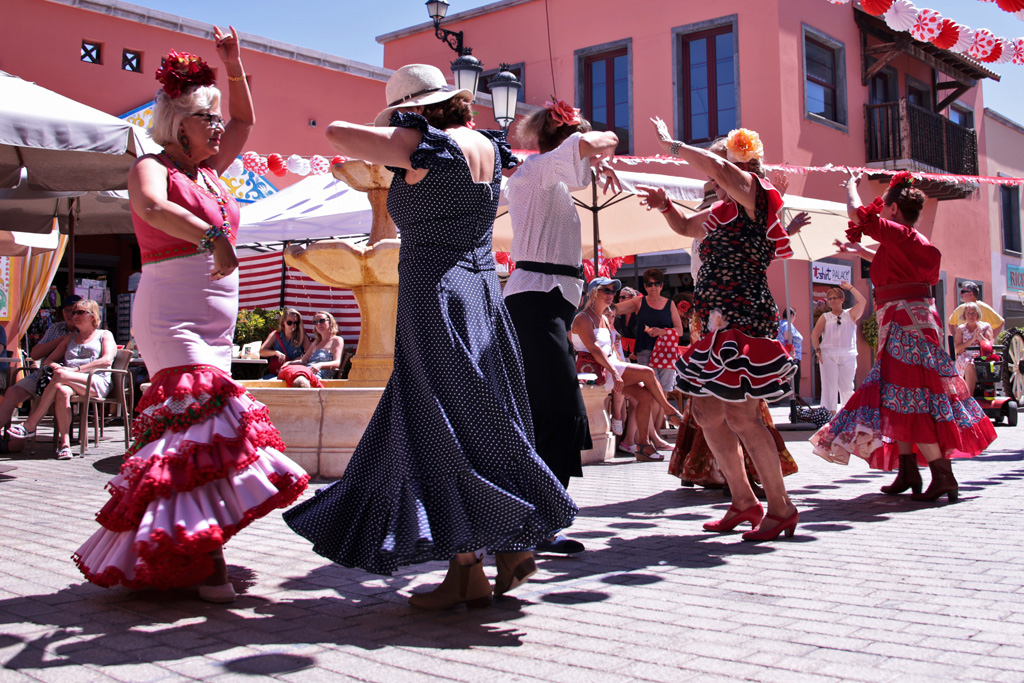
Lajares, La Oliva, Tetir, Antigua e Tuineje sono paesi nell’interno dell’isola, situati tra vulcani e monti rocciosi e desolati. Terre vulcaniche dove la vegetazione non è molto presente. In questi luoghi scopriamo la simpatia degli abitanti sempre disponibili ad aiutarci, bellissime manifestazione folcloristiche e artigianali dove si può assistere a canti corali e balli tradizionali gustando piatti locali e a buon prezzo. Lo shopping fra le bancarelle degli artigiani che offrono prodotti di eccellenti fatture e materiali, dagli accessori in cuoio colorato e decorato tipico spagnolo canariense, agli abiti, ai dolci e tanti articoli di uso comune. Andando verso sud si attraversano le terre più calde dove è meno la presenza di terra vulcanica, sterminate zone dove non c’è la presenza dell’uomo. Arriviamo a Morro jable una città moderna e turistica che si affaccia sul mare, dove il tenore di vita sembra molto più alto, troviamo molti turisti con famiglie e molti negozi per lo shopping.
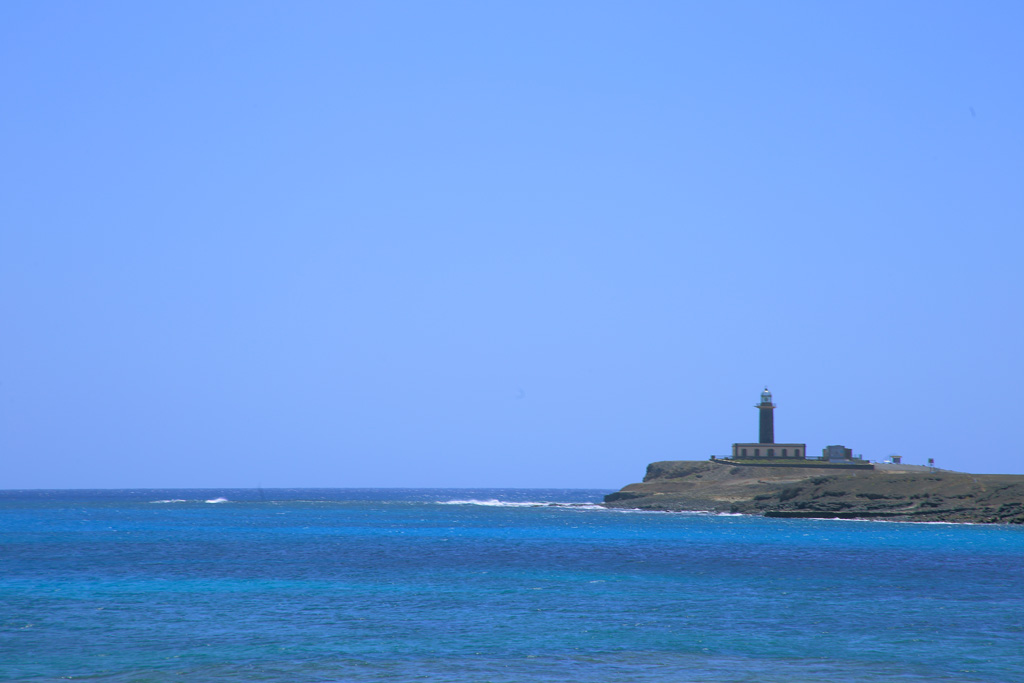
La attraversiamo per andare nella punta sud verso il faro di Morro jable, la punta estrema dove c’è un vento fortissimo, si può sentire bene dalla scogliera alta circa 50-60 metri che si affaccia a strapiombo sul mare. È impressionante vedere una natura così predominante sull’uomo. Parlando con alcuni locali abbiamo scoperto che c’è un altro luogo dove la natura fa da padrona, Cofete.
Così ci siamo messi in marcia attraverso desolate terre, una lunga strada sterrata, che a tratti è così stretta che due macchine non ci passano, e come se non bastasse alcuni chilometri sono lungo un versante della Montagna che dà a strapiombo ad un’altezza di 400-500 metri, impressionante. In pochi si accingono ad avventurarsi in questo luogo.
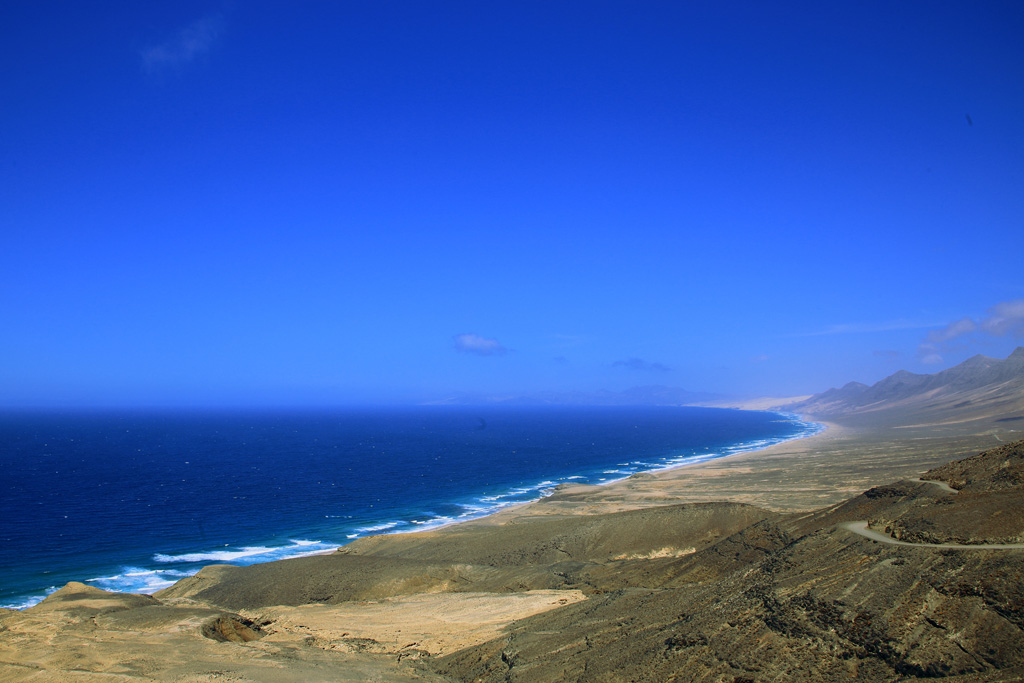
La vista dalla montagna della spiaggia immensa e sconfinata, protetta dalla catena montuosa che tutto il giorno è colpita da un forte vento, dà una visione suggestiva del territorio, come se tornassimo indietro nel tempo alle nostre origini primordiali di essere umano. Abbiamo passato una bella giornata nella spiaggia, e siccome prima avevo visto un piccolo bar caratteristico, ci siamo fermati a bere qualcosa di fresco, prima di affrontare la strada di ritorno per Corralejo. Tornando verso nord troviamo Playa Sotavento, una fra le spiagge più belle che abbia mai visto, si tratta di una distesa di sabbia chiara lunga 4 km e larga circa 200 metri.
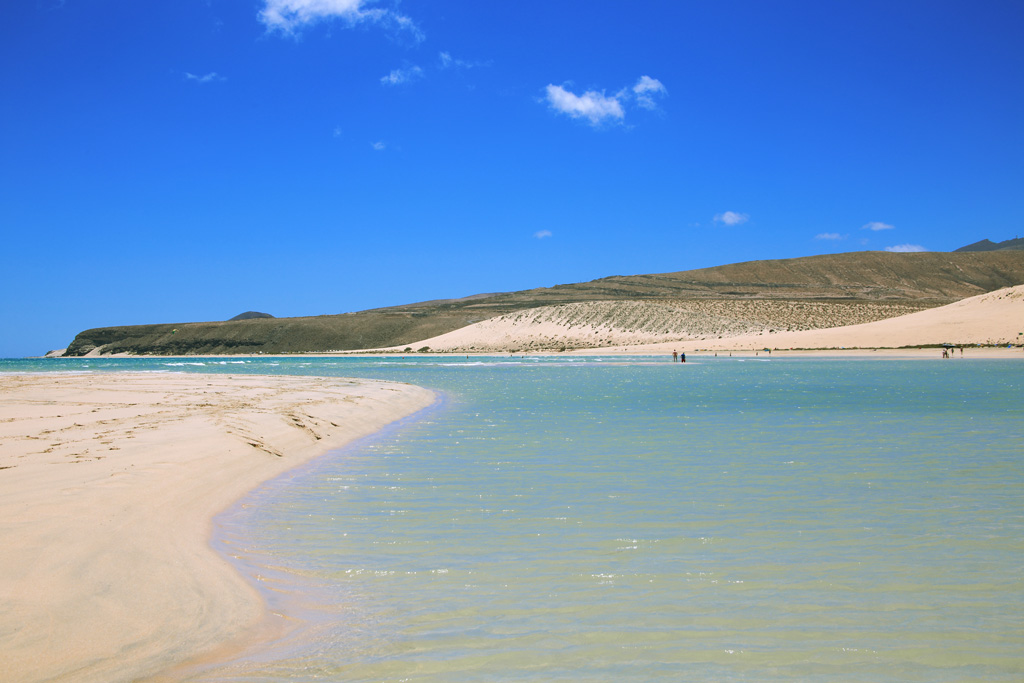
Due volte l’anno qui si presenta un fenomeno fantastico, l’alta marea ricopre l’intera spiaggia con acqua profonda circa 40-60 cm dove si può fare attività di windsurf in sicurezza o semplicemente camminare, uno spettacolo della natura. Percorrere le strade costiere al tramonto è bellissimo, si può vedere il contrasto dei colori rosso e arancio del cielo con il blu dell’oceano, quindi che dire, le spiagge sono bellissime, il mare è stupendo, si possono praticare moltissimi sport all’aria aperta, il cibo è favoloso, si può mangiare pesce fresco tutti i giorni a poco prezzo, le lingue parlate sono lo spagnolo e l’inglese. Un luogo dove passare le vacanze in tranquillità e ritrovare un equilibrio con la natura.
Spero che questo articolo vi sia piaciuto, Luca Brogi.

